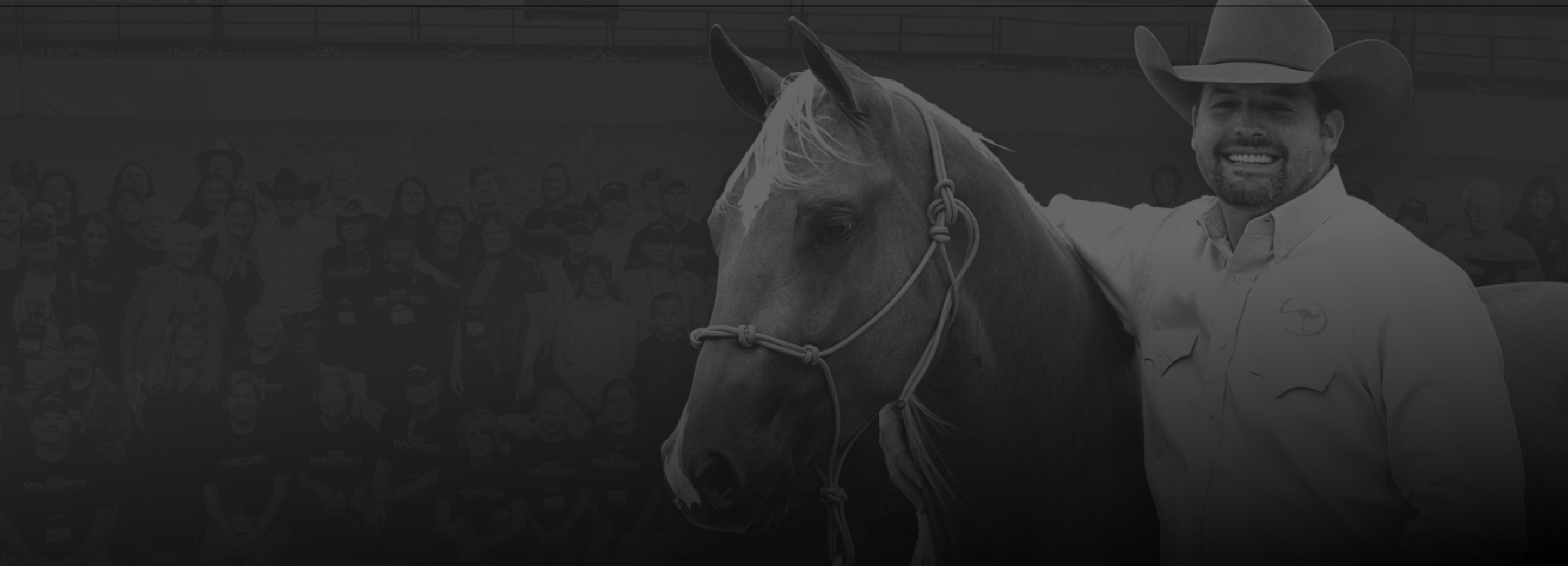Clinton Anderson from Downunder Horsemanship has developed a way to train horses, regardless of their past problems or traumas. It all begins with training the owners so they can gain their horse’s respect and understand how to properly control them. Join Clinton on his weekly endeavors of tackling some of the most challenging situations with problem horses and problem owners. This week, we watch as Jeff Davis, one of Clinton’s Professional Clinicians, tells us about one of the most valuable lessons he learned—a tired colt is a good colt.
Jeff starts out the episode by expressing how one of the most impactful lessons he learned when he was working for Clinton full-time in the Clinician Academy was the importance of doing plenty of groundwork to ensure a horse was ready to ride. The simple act of getting your horse to tune in to you and a little tired has the potential to go a long way, and as easy as it may sound, it’s a lesson he held onto as time passed. He tells viewers that before you go to get on your horse, there’s a common expression that you’ll hear all of them say at Clinton’s clinics—a tired horse is a good horse.
Now, while this expression can be applied to any horse, it’s especially true for a young horse or a horse without many years of training behind them. The truth is you don’t see tired colts or tired horses giving people any problems. You don’t see tired colts running around, bucking people off, and rearing up or kicking out when asked to move forward. You never see tired colts do things that require more energy than what they’re being asked to do. So, you’re better off, before getting on your horse, making sure they’re tuned in to you and a little tired so that they don’t give you any problems. If you’re doubting yourself, ask—is my horse worked down enough? Does he have enough sweat on his neck? More often than not, the answer is probably no. That’s when you should decide to work with the horse a little bit more. Because, at the end of the day, you’d much rather be on a horse that’s a bit tired, especially if you’re going to be working with or riding a horse that you’re not familiar with or a colt that you’re just starting.
Jeff tells us that he would much rather spend more time working with a horse on the ground than immediately getting in the saddle and having to deal with a horse that acts wild. By preparing the horse on the ground, the chances of him doing something silly when you get in the saddle are lower. If you don’t know anything about the horse you’ll be working with, you shouldn’t trust him as far as you can throw him. So, get a little sweat on his neck, get him to tune in to you and get him a little tired. That will help you avoid a lot of potential wrecks.
Clinton Anderson has spent the past 20 years devoting his time to creating the best training tools and videos available to horsemen worldwide. The Downunder Horsemanship app offers over 100 hours of free in-depth training content. No Worries Club members will have full access to Clinton’s ever-growing training library and many members-only features and information. And the best part is that you can view and interact with each lesson on your mobile device or computer, giving you ultimate access to the method anytime and anyplace.
To learn more about the Downunder Horsemanship training method, become a member of the No Worries Club, or to get information on any of the products seen on our show, head over to our homepage and download the Downunder Horsemanship app today!

Master Your horsemanship Skills
Like these tips? Join the No Worries Club and hone your skills with thousands of hours of Clinton’s easy, step-by-step method horse training videos.



